Если вы используете какие-либо программы для анализа содержимого диска, то можете обнаружить, что в Windows 10 скрытая системная папка C:\Windows\Installer занимает много места: иногда сотни мегабайт, а иногда и гигабайты, отсюда и вопрос — что это за папка и что с ней можно, а чего нельзя делать.
В этой инструкции о том, можно ли удалять папку Windows\Installer, файлы в ней, к чему это может привести и есть ли возможность уменьшить занимаемое этой папкой место на жестком диске или SSD. Также может быть интересным: Как очистить место на диске C.
- Можно ли удалить C:\Windows\Installer
- Как очистить папку Windows\Installer в Windows 10
- Видео инструкция
Можно ли удалять файлы из C:\Windows\Installer в Windows 10
Если вы загляните в папку C:\Windows\Installer (папка скрыта по умолчанию, но в нее легко попасть, введя в адресную строку проводника путь к папке, либо включив показ и скрытых и защищенных системных файлов Windows 10), в ней вы обнаружите набор файлов с расширениями .msi и .msp, а также папки: состоящие из кодов и отдельные с расширением .tmp.
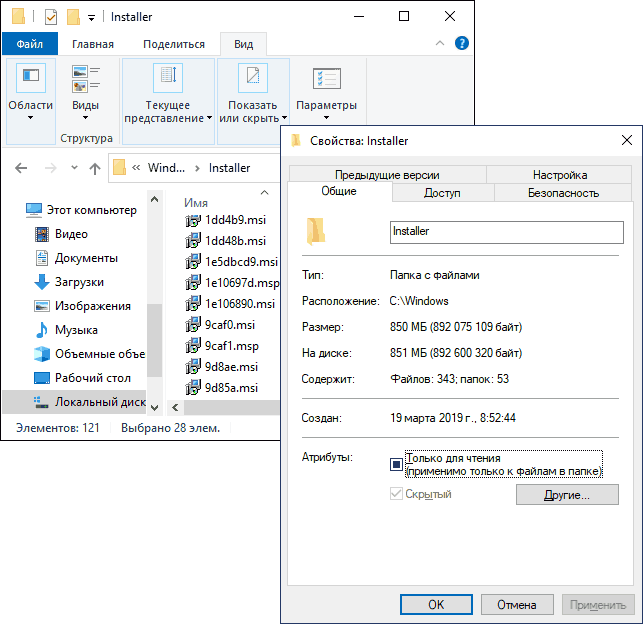
Можно ли это всё удалить? Короткий ответ: нет, не следует. Вы можете безопасно удалить лишь папки .tmp, но они и не занимают много места. Однако, существует возможность в какой-то степени очистить эту папку, о чем в следующем разделе.
А сначала о том, что представляют собой эти файлы в Windows\Installer — это файлы установщиков программ (тех, что установлены на вашем компьютере), использующих для установки службу «Установщик Windows» и они используются когда программа обновляется или когда вы её, наоборот, удаляете через «Панель управления» — «Программы и компоненты». Также они могут использовать для функции «Исправить установку». Соответственно, при их удалении могут возникнуть проблемы при выполнении этих задач.
Как очистить папку Windows\Installer
Иногда случается, что в этой папке присутствуют установщики программ .msi и .msp, более не используемые нигде в системе и такие файлы можно удалить, но для этого нужно определить, какие именно это файлы. Примечание: теоретически далее описанные шаги могут привести к нежелательным последствиям.
Для этого можно использовать бесплатную утилиту PatchCleaner, официальный сайт разработчика — https://www.homedev.com.au/Free/PatchCleaner (для загрузки используйте вкладку «Downloads» в верхней части описания программы).
После запуска PatchCleaner, утилита проанализирует содержимое указанной папки и, если среди файлов в C:\Windows\Installer окажутся файлы, которые более не используются (они будут отображены в разделах «Excluded by filters» и «Orphaned». Такие файлы можно сразу удалить (Delete) или переместить в указанную папку «Move» (лучше сначала использовать второй вариант, чтобы убедиться, что всё работает как прежде).
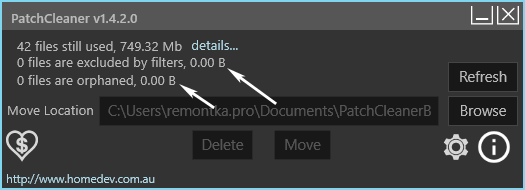
Также, если нажать по «Details» рядом с количеством найденных файлов, в том числе используемых в настоящее время (still used), можно увидеть информацию о том, каким программам соответствуют найденные файлы .msi и .msp, сколько места на диске они занимают и, возможно, принять решение об удалении некоторых из этих программ, если вы ими более не пользуетесь и они не требуются для правильного функционирования другого ПО.

Видео инструкция
Надеюсь, информация была полезной. К слову, о больших папках в Windows 10: вы можете очистить папку DriverStore\FileRepository.
Там храниться кэш всех ранее установленных MSI. Вот, например, удалите Вы нечаянно записи в реестре. Потом запустите приложение а реестровые записи восстановятся из MSI в кэше.
Я удалил. Жаба душила. Лучше бы я этого не делал.
Теперь при обновлении почти любой программы запрашивает *.msi, которой у меня нет. Но это не самое страшное, можно ведь скачать старую версию. Если же обновляешь Винду, то она запросит *.msi, которых даже в инете не найти, — в этом случае придется ковырять *.cab-ы установочного диска или какого-нибудь SP.
From Wikipedia, the free encyclopedia
This article is about the Microsoft Windows component. For the installation of the operating system itself, see Windows Setup.
Windows Installer
|
Help screen of Windows Installer 5.0 running on Windows 11 |
|
| Developer(s) | Microsoft |
|---|---|
| Initial release | 31 August 1999; 25 years ago |
| Final release |
5.0 |
| Operating system | Microsoft Windows |
| Platform | IA-32, x86-64, ARM32, ARM64, Itanium |
| Included with | Windows 2000 and later |
| Type | Installer |
| License | Freeware |
| Website | learn |
Windows Installer Package[2]
| Filename extension |
.msi, .msp |
|---|---|
| Internet media type |
application/x-ole-storage |
| Developed by | Microsoft |
| Type of format | Archive |
| Container for | Installation information and an optional .cab file payload |
| Extended from | COM Structured Storage |
| Open format? | No |
Windows Installer (msiexec.exe, previously known as Microsoft Installer,[3] codename Darwin)[4][5] is a software component and application programming interface (API) of Microsoft Windows used for the installation, maintenance, and removal of software. The installation information, and optionally the files themselves, are packaged in installation packages, loosely relational databases structured as COM Structured Storages and commonly known as «MSI files», from their default filename extensions. The packages with the file extensions mst contain Windows Installer «Transformation Scripts», those with the msm extensions contain «Merge Modules» and the file extension pcp is used for «Patch Creation Properties».[6] Windows Installer contains significant changes from its predecessor, Setup API. New features include a GUI framework and automatic generation of the uninstallation sequence. Windows Installer is positioned as an alternative to stand-alone executable installer frameworks such as older versions of InstallShield and NSIS.
Before the introduction of Microsoft Store (then named Windows Store), Microsoft encouraged third parties to use Windows Installer as the basis for installation frameworks, so that they synchronize correctly with other installers and keep the internal database of installed products consistent. Important features such as rollback and versioning depend on a consistent internal database for reliable operation. Furthermore, Windows Installer facilitates the principle of least privilege by performing software installations by proxy for unprivileged users.
Logical structure of packages
[edit]
A package describes the installation of one or more full products and is universally identified by a GUID. A product is made up of components, grouped into features. Windows Installer does not handle dependencies between products.
A single, installed, working program (or set of programs) is a product. A product is identified by a unique GUID (the ProductCode property) providing an authoritative identity throughout the world. The GUID, in combination with the version number (ProductVersion property), allows for release management of the product’s files and registry keys.
A package includes the package logic and other metadata that relates to how the package executes when running. For example, changing an EXE file in the product may require the ProductCode or ProductVersion to be changed for the release management. However, merely changing or adding a launch condition (with the product remaining exactly the same as the previous version) would still require the PackageCode to change for release management of the MSI file itself.
A feature is a hierarchical group of components. A feature may contain any number of components and other sub-features. Smaller packages can consist of a single feature. More complex installers may display a «custom setup» dialog box, from which the user can select which features to install or remove.
The package author defines the product features. A word processor, for example, might place the program’s core file into one feature, and the program’s help files, optional spelling checker and stationery modules into additional features.
A component is the basic unit of a product. Each component is treated by Windows Installer as a unit. The installer cannot install just part of a component.[7] Components can contain program files, folders, COM components, registry keys, and shortcuts. The user does not directly interact with components.
Components are identified globally by GUIDs; thus the same component can be shared among several features of the same package or multiple packages, ideally through the use of Merge Modules.
A key path is a specific file, registry key, or ODBC data source that the package author specifies as critical for a given component. Because a file is the most common type of key path, the term key file is commonly used. A component can contain at most one key path; if a component has no explicit key path, the component’s destination folder is taken to be the key path. When an MSI-based program is launched, Windows Installer checks the existence of key paths. If there is a mismatch between the current system state and the value specified in the MSI package (e.g., a key file is missing), the related feature is re-installed. This process is known as self-healing or self-repair. No two components should use the same key path.
Developing installer packages
[edit]
Creating an installer package for a new application is not trivial. It is necessary to specify which files must be installed, to where and with what registry keys. Any non-standard operations can be done using Custom Actions, which are typically developed in DLLs. There are a number of commercial and freeware products to assist in creating MSI packages, including Visual Studio (natively up to VS 2010,[8] with an extension on newer VS versions[9]), InstallShield, WiX, InnoSetup and InstallSimple. To varying degrees, the user interface and behavior may be configured for use in less common situations such as unattended installation. Once prepared, an installer package is «compiled» by reading the instructions and files from the developer’s local machine, and creating the .msi file.
Windows Installer may be slower than native code installation technologies, such as InstallAware,[10] due to the overhead of component registration and rollback support, which often involves generating tens of thousands of registry keys and temporary files.
The user interface (dialog boxes) presented at the start of installation can be changed or configured by the setup engineer developing a new installer. There is a limited language of buttons, text fields and labels which can be arranged in a sequence of dialogue boxes. An installer package should be capable of running without any UI, for what is called «unattended installation».
Microsoft provides a set of Internal Consistency Evaluators (ICE) that can be used to detect potential problems with an MSI database.[11] The ICE rules are combined into CUB files, which are stripped-down MSI files containing custom actions that test the target MSI database’s contents for validation warnings and errors. ICE validation can be performed with the Platform SDK tools Orca and msival2, or with validation tools that ship with the various authoring environments.
For example, some of the ICE rules are:
- ICE09: Validates that any component destined for the System folder is marked as being permanent.
- ICE24: Validates that the product code, product version, and product language have appropriate formats.
- ICE33: Validates that the Registry table is not used for data better suited for another table (Class, Extension, Verb, and so on).
Addressing ICE validation warnings and errors is an important step in the release process.
- APPX – Software package format used on Microsoft’s Windows Store
- App-V – Software package format used for virtualization and streaming
- .exe
- List of installation software
- Package management system
- Windows Package Manager
- ZAP file – a way to perform an application installation when no MSI file exists
- ^ «Released Versions of Windows Installer». Microsoft Developer Network. Microsoft. Retrieved 3 November 2012.
- ^ «File Extension .MSI Details». Filext.com. Retrieved 2013-04-24.
- ^ Mensching, Rob (2003-11-25). «Inside the MSI file format». MSDN Blogs. Archived from the original on 2009-01-15. Retrieved 2017-02-15.
- ^ Mensching, Rob (2003-10-11). «The story of Orca». MSDN Blogs. Archived from the original on 2008-12-23. Retrieved 2017-02-15.
- ^ Smith, Chris (2005-07-01). «Windows Installer, The .NET Framework, The Bootstrapper, and You». MSDN Blogs. Retrieved 2017-02-15.
- ^ Stewart, Heath (2006-02-27). «Identifying Windows Installer File Types». Retrieved 2020-04-22.
- ^ «Windows Installer Components». MSDN Library. Microsoft Corporation. 2012-11-30. Retrieved 2013-04-08.
- ^ Hodges, Buck (2011-03-17). «Visual Studio setup projects (vdproj) will not ship with future versions of VS». MSDN Blogs. Retrieved 2020-02-04.
- ^ «Visual Studio Installer Projects Extension». Visual Studio Blog. 2014-04-17. Retrieved 2020-02-04.
- ^ «Extending Windows Installer with Faster Native Code Setup Engine» (Press release). 9 November 2010. Retrieved 22 August 2024.
- ^ Internal Consistency Evaluators – ICEs
- Official website
Привет всем! Очень часто читатели интересуются, можно ли удалить папку Windows Installer из операционной системы, так как её содержимое занимает на диске (C:) более 5 Гб и находятся в ней файлы с весьма странными названиями. Друзья, удалять данную папку ни в коем случае нельзя, но её можно уменьшить в размере с помощью очистки, а лучше и вовсе переместить с раздела (C:) на другой раздел или физический диск.
По моему опыту, обращают внимание на эту папку в основном только тогда, когда на диске (C:) заканчивается свободное пространство, а увеличить его за счёт другого диска по каким-либо причинам нельзя. Тогда пользователи пускаются в эксперименты: производят процесс очистки, переносят на другой диск файл подкачки, отключают спящий режим, уменьшают размер корзины, но это помогает лишь на время и тогда начинается исследование диска (C:) с помощью специальных утилит анализа дискового пространства. Эти приложения быстро показывают самые большие объекты на системном диске, среди которых обычно оказываются папки: C:\Windows\WinSxS и C:\Windows\Installer, последняя удаляется без проблем, вот только спустя некоторое время с виндой начинает твориться что-то неладное, при попытке удаления какой-нибудь программы выходят различные ошибки.
Дело в том, что в этой папке хранится информация о всех программах, обновлениях, исправлениях, распространяемых пакетах и других компонентах, установленных в вашей Windows. Да, данная папка может занимать более 5 Гб дискового пространства, но если её удалить, система перестанет владеть информацией об установленных приложениях, последствия этого могут быть самые разные, но все они достаточно неприятные. Поэтому удалять каталог Installer ни в коем случае нельзя, но его можно значительно уменьшить, так как в нём кроме необходимых системе компонентов хранятся и отработавшие своё файлы. Определить, что можно удалить в этой папке, а что нет, сможет специальная программа. Также существует более кардинальный вариант, это перенести папку Installer на другой раздел HDD или другой физический диск.
Итак, каталог Windows Installer является не просто скрытой папкой. Всё его содержимое относится к защищённым системным файлам! Чтобы увидеть папку, включите в системе отображение защищённых системных файлов,
В моём случае размер папки почти 6 Гб. Многовато.
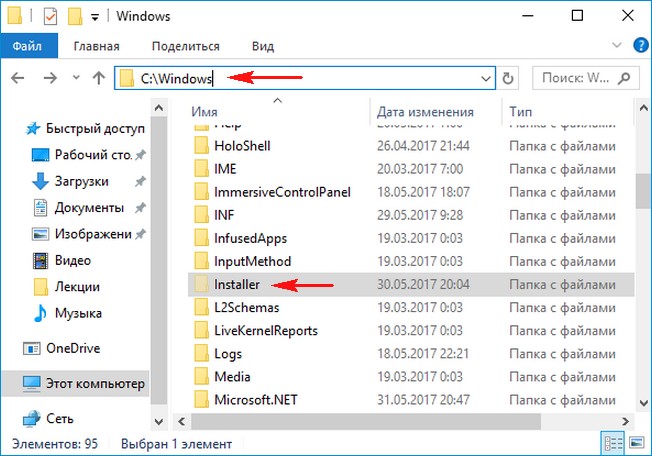
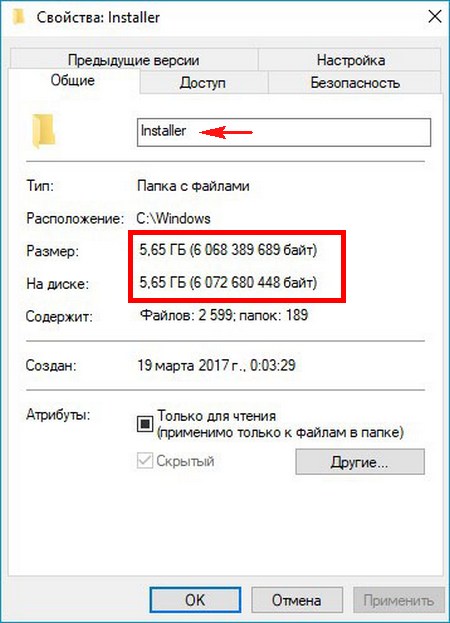
Скачиваем программу
PatchCleaner
на моём облачном хранилище, устанавливаем и запускаем её.
Происходит моментальный анализ каталога Windows Installer.
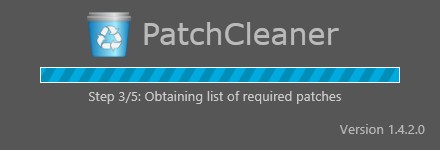
Информация 273 files still used, 3.91 Gb, говорит сколько файлов еще необходимы системе и их удалить не получится.
Информация files are orphaned, 2.18 Gb, сколько файлов можно удалить.
Жмем «Delete» и программа начинает работать.
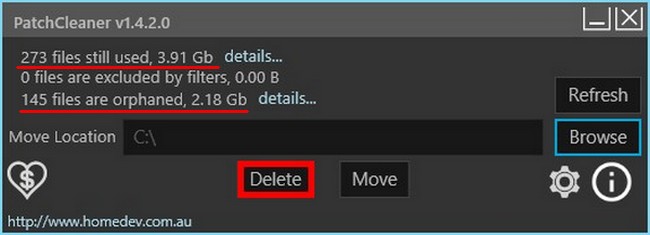
Yes

ОК

В папке C:\Windows\Installer осталось 273 файла общим размером 3.91 Gb.
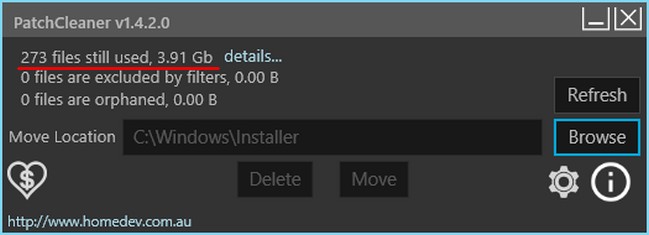
Как видим, размер папки после очистки всё равно достаточно большой и если вы захотите перенести её на другой диск, то сделать это можно так.
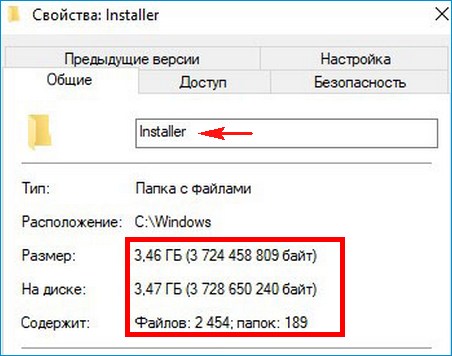
Windows Installer Folder: An In-Depth Look
The Windows Installer Folder is a vital component of the Windows operating system, specifically designed to facilitate the installation, maintenance, and removal of software applications. Since its introduction, it has enhanced the user experience, automated numerous processes, and allowed developers to ensure that their applications function correctly across various systems. This article will delve into the intricate details of the Windows Installer folder, examining its purpose, functionality, components, and management aspects to ensure users can navigate software installations efficiently.
Overview of Windows Installer
Before diving into the specifics of the Windows Installer folder, it’s essential to understand the Windows Installer itself. The Windows Installer is a service responsible for managing the installation and maintenance of software applications on Windows operating systems. It supports the installation of Windows applications in a standard format, which includes installation packages with specific files, registry entries, and resources necessary for the application to function correctly.
Key Features of the Windows Installer:
- Standardized Installation Process: Windows Installer ensures that applications are installed in a uniform manner, allowing for easier management and troubleshooting.
- Rollback Capabilities: If an installation fails partway through, Windows Installer provides a mechanism for reversing changes, thus maintaining the system’s integrity.
- Patch Management: Windows Installer allows for the application of updates and patches to existing software installations, ensuring users have the latest functionalities and security fixes.
- Unattended Installation: For enterprise environments, Windows Installer supports scripts that automate software installations, minimizing user intervention.
The Windows Installer Folder
The Windows Installer folder, usually located at C:WindowsInstaller, is where the Windows operating system stores installation files for applications installed via the Windows Installer service. This folder may not be visible by default as it is a hidden system folder, but it plays a crucial role in application management.
Purpose of the Windows Installer Folder:
The Windows Installer folder serves several critical functions:
-
Storage of Installation Files: When an application is installed, Windows Installer copies essential files into this folder, often in the form of Microsoft Installer (.msi) files or .msp (patch) files. These files contain the necessary instructions and resources needed to correctly install, update, or uninstall an application.
-
Enabling Repair Operations: Should an application become corrupted or malfunction, the installer can reference the files stored in this folder to repair the application without requiring the original installation media.
-
Facilitating Uninstallation: When an application is uninstalled, Windows Installer utilizes the corresponding files in this folder to ensure that all components of the software are completely removed from the system.
Contents of the Windows Installer Folder
The contents of the Windows Installer folder can be intricate, containing various file types tailored to specific installation scenarios. Key elements include:
-
.msi Files: These are the core files associated with a program’s installation package. They contain all necessary data, including file installation paths, registry entries, and configuration settings.
-
.msp Files: These are patch files that contain updates or fixes for installed applications. They are used to modify existing installations without requiring a complete reinstall.
-
Create and Delete Flags: Each file in the installer folder has create and delete flags to track its usage and manage the files throughout the application’s lifecycle.
Exploring the Contents
Navigating the Windows Installer folder can be daunting, primarily due to its hidden nature and complex file structure. To better understand its workings, it helps to recognize how the contents are structured.
-
File Naming Convention: The files stored in the Windows Installer folder typically have an encoded name that doesn’t directly reveal the application name. This obfuscation is intentional, as it helps maintain system performance and stability.
-
Retention of Old Versions: Often, the folder will house files from old installations or previous versions of applications. This policy allows users to perform rollbacks or repairs seamlessly.
-
System Cleanup: Due to the possible accumulation of numerous old files, periodic cleaning of this folder (done with caution) can be beneficial in reclaiming disk space. We will discuss this in detail further in the article.
Managing the Windows Installer Folder
While the Windows Installer folder is crucial for the smooth operation of software installations and updates, managing it correctly is just as important. Incorrect handling could lead to application errors or system instability.
Accessing the Windows Installer Folder:
To access the Windows Installer folder, you usually need administrative privileges. Here’s how to reveal it:
- Open Windows Explorer.
- Click on ‘View’ in the ribbon and then select ‘Options.’
- Navigate to the ‘View’ tab, select ‘Show hidden files, folders, and drives,’ and uncheck ‘Hide protected operating system files.’
Dealing with Space Issues
Since the Windows Installer folder can accumulate numerous files over time, it is crucial to manage space effectively. The best practices include:
-
Running Disk Cleanup: Windows comes with built-in tools such as Disk Cleanup, which can help identify and clear temporary files, including some old installers.
-
Using Third-Party Cleanup Tools: Tools like CCleaner can analyze the Windows Installer folder and provide options for safely deleting unneeded files, although users should be cautious when using such tools.
-
Manual Deletion (With Caution): If you choose to delete files manually, always ensure that you have a backup and double-check the specific files you’re removing. Deleting essential installation files may irreparably damage installed programs.
Troubleshooting Common Issues
Occasionally, users may encounter problems related to the Windows Installer folder. Typical issues include installation failures, missing files, or corruption. Here are some troubleshooting steps:
-
Re-registering the Windows Installer: Sometimes, the Windows Installer service may require re-registration. This can be performed via a command prompt with administrative privileges by executing the following commands:
msiexec /unregister msiexec /register -
Repairing Windows Installer: If you’re facing continuous issues, it may be necessary to reset or repair the Windows Installer engine, which can often resolve erratic behavior.
-
Checking for Updates: Ensure that Windows is up to date. Occasionally, issues can stem from outdated system files, which updates can rectify.
-
Event Viewer Logs: Examining logs in the Windows Event Viewer can provide insights into recurring issues, offering detailed error messages or warnings related to installation failures.
Advanced Management and Insights
For advanced users or system administrators, naturally, more sophisticated methods can be utilized in managing the Windows Installer folder.
Using Command Line Tools
Windows provides several command-line tools that can aid in managing and troubleshooting installations:
-
Windows Installer Command-Line Options: Using the
msiexeccommand allows users to perform installations with specific options, such as logging results which can be instrumental in diagnosing issues.Example command to install:
msiexec /i path_to_installer.msiExample command to log:
msiexec /i app.msi /L*v log.txt -
PowerShell Commands: Using PowerShell enables advanced management capabilities, including retrieval of installation status, modification of installer properties, and searching through installer logs for troubleshooting.
Understanding Installer Log Files
For diagnostic purposes, logging installations can be invaluable. When logs are enabled, they will detail every step of the installation process, providing insights into what went right or wrong.
Key Considerations When Working with the Windows Installer Folder
When interacting with the Windows Installer folder, it’s essential to keep several considerations in mind, particularly from a security and management perspective:
-
Backup: Before performing any maintenance, always back up your system. This precaution will help recover if any important files are mistakenly deleted.
-
Avoiding Direct Manipulation: While it might be tempting to delete unused files directly from the Windows Installer folder, doing so can lead to problematic situations. Always use proper uninstallation procedures or system utilities designed for this purpose.
-
Permissions: Since the Windows Installer folder is a system folder, it should only be accessed by advanced users or administrators familiar with how Windows manages installations.
The Future of Windows Installer
As software continues to evolve with containerization and cloud-based applications becoming more mainstream, the Windows Installer needs to adapt for better integration and capabilities. Innovations like MSIX (a modern installation package format) promise streamlining the deployment and management process, potentially rendering traditional Windows Installer methods less critical.
Conclusion
The Windows Installer folder is an integral part of the Windows operating system, operating behind the scenes to ensure seamless software installations and management. While it may not always be visible to the average user, understanding its functionality—its contents, management, troubleshooting processes, and implications on system performance—enables users to have a much better handle on their software environments. Users can ensure a smoother, hassle-free experience by being proactive and knowledgeable about the Windows Installer folder.
With the rise of new technologies, monitoring updates and transitions in this area will remain important, ensuring users adapt along with the advancements in the Windows ecosystem.
